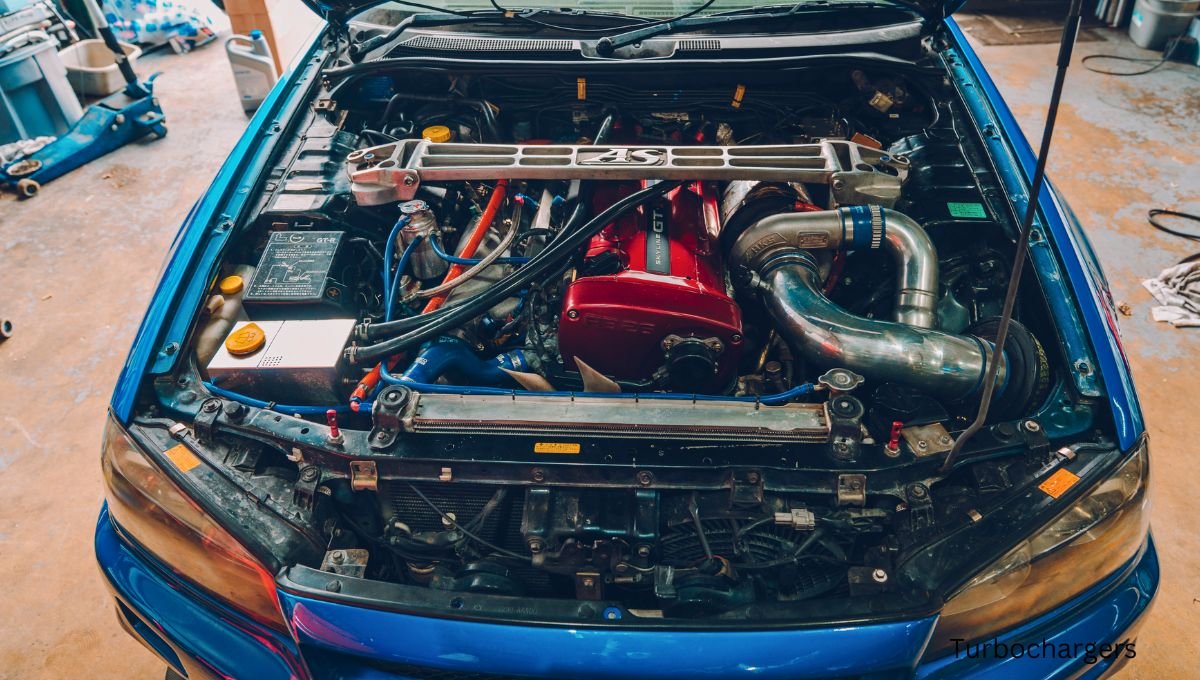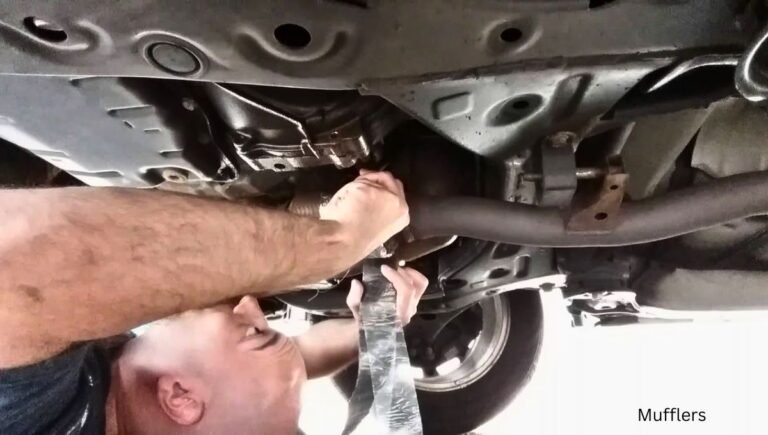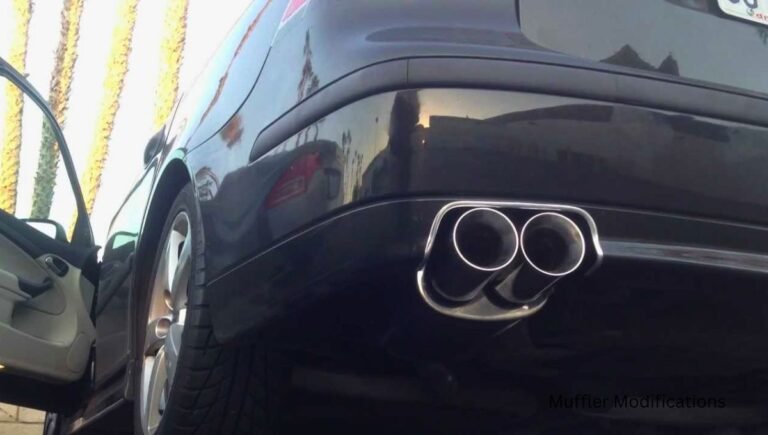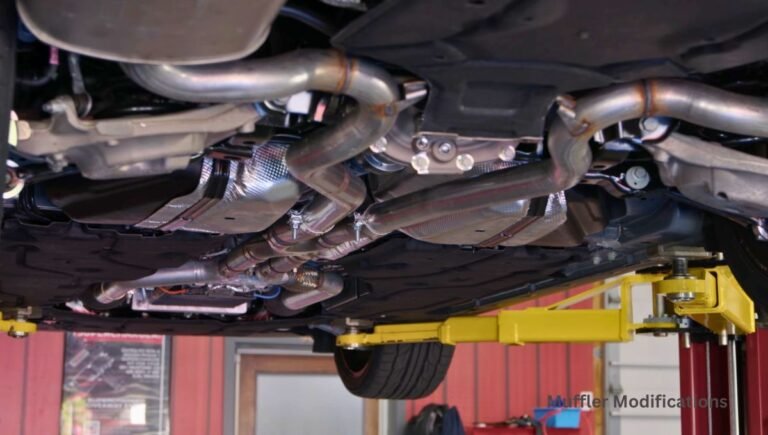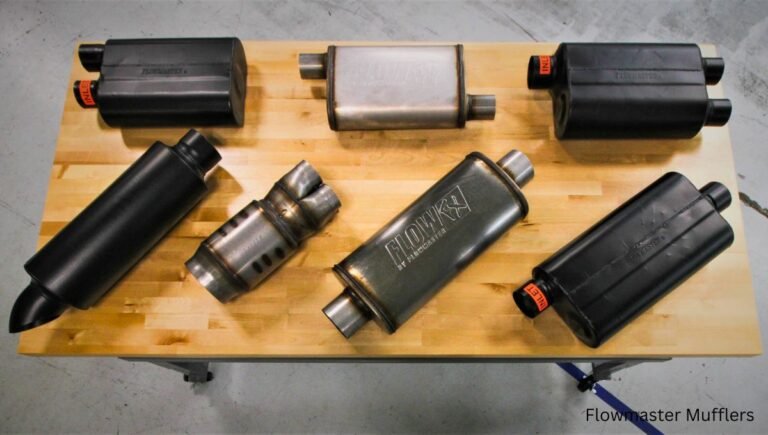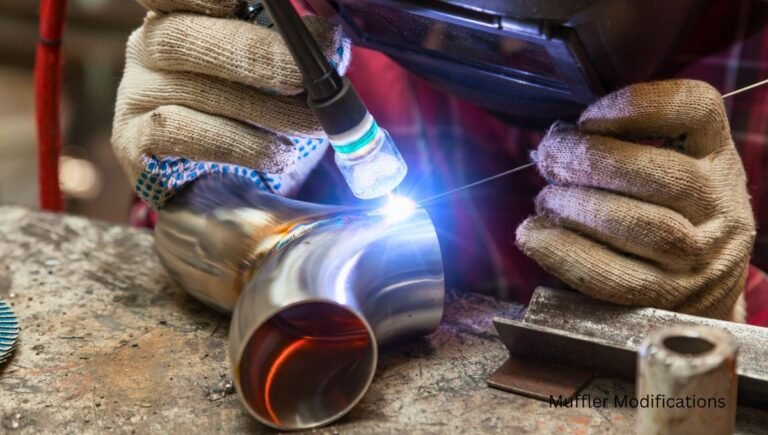Is a Turbo Considered a Muffler? Debunking Myths!
No, a turbo is not considered a muffler. A turbocharger is a device that increases an engine’s power.
If you’re a car enthusiast or simply curious about vehicle mechanics, you may have come across the question of whether a turbo is considered a muffler. The simple answer is no. A turbocharger is a forced induction device that increases an engine’s power and efficiency by forcing extra air into the combustion chamber.
On the other hand, a muffler is a component of the exhaust system designed to reduce noise produced by the engine. While both are important for the performance and operation of a vehicle, they serve different purposes.
In this blog post, we’ll explore the functions of a turbo and a muffler, and why it’s important to understand the distinction between the two. So, let’s dive in and explore the world of automotive engineering!
The Basics Of Turbochargers
Turbochargers are not considered mufflers; they are two distinct components in a vehicle’s exhaust system. Turbochargers increase engine power by compressing air, while mufflers reduce noise levels. Both play essential roles in engine performance and efficiency.
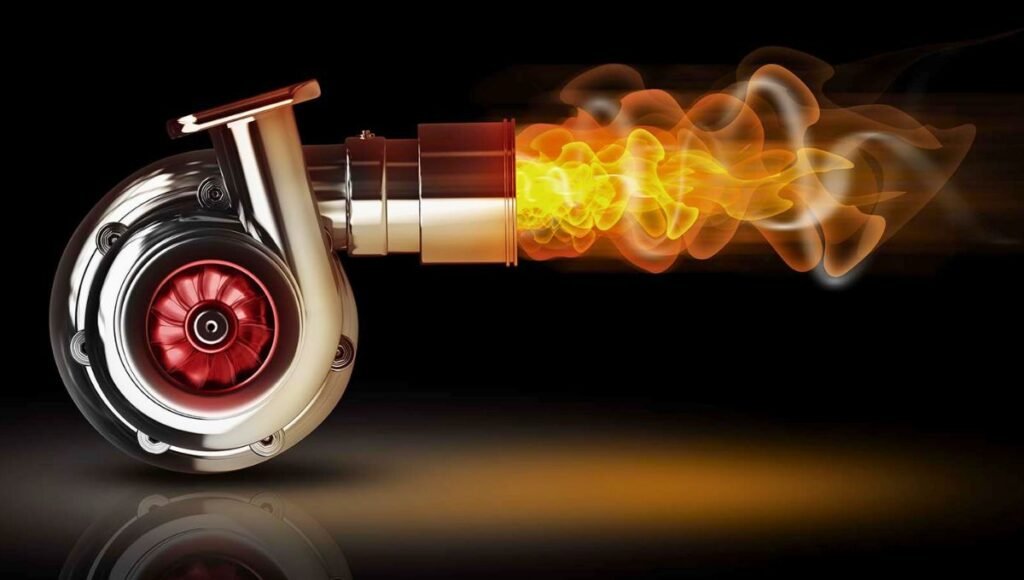
Turbo Functionality
Turbochargers have become increasingly popular in the automotive industry, as they can significantly enhance an engine’s performance. A turbocharger is essentially an air compressor that increases the amount of air supplied to an engine’s combustion chamber, enabling it to burn more fuel and generate more power.
The turbocharger consists of two main components, the turbine and the compressor, which are connected by a shaft.
Components Of A Turbo System
The turbine is powered by the engine’s exhaust gases, which exit the engine and flow through the turbocharger’s turbine housing. As the exhaust gases pass over the turbine blades, they cause the turbine to rotate.
This rotation is transferred to the compressor on the other end of the shaft, which compresses the air entering the engine’s intake manifold. The compressed air is then forced into the engine’s cylinders, enabling them to burn more fuel and produce more power.
The turbocharger system also includes several other components, such as the wastegate, intercooler, and blow-off valve. The wastegate regulates the amount of exhaust gas flowing over the turbine, preventing it from spinning too fast and causing the compressor to produce too much boost pressure.
The intercooler cools the compressed air before it enters the engine, increasing its density and providing even more power. Finally, the blow-off valve releases excess pressure from the compressor, preventing damage to the turbocharger and other engine components.
In conclusion, a turbocharger is not a muffler, but rather a device that compresses air and increases an engine’s power output. Understanding the basics of turbochargers and their components can help drivers make informed decisions about their vehicles and better appreciate the technology that makes them go faster.
Muffler Purpose
A muffler is a vital component of a vehicle’s exhaust system designed to reduce the noise produced by the engine. It is responsible for quieting the sound of the exhaust gases as they are expelled from the engine.
The primary purpose of a muffler is to minimize the loud noises that result from the combustion process within the engine. By doing so, it contributes to a quieter and more pleasant driving experience for both the occupants of the vehicle and the surrounding environment.
How Mufflers Reduce Noise
Mufflers reduce noise through a series of internal chambers and tubes that work to reflect and cancel out sound waves. As the exhaust gases pass through these chambers, they are forced to change direction, causing the sound waves to collide and cancel each other out.
The muffler contains sound-absorbing materials, such as fiberglass, which further dampen the noise. This intricate process results in a significant reduction in the overall sound emitted by the vehicle’s exhaust system.
Comparing Turbos And Mufflers
A turbo and a muffler serve different functions in a vehicle’s exhaust system. A turbo is not considered a muffler; rather, it is used to increase engine power. On the other hand, a muffler is designed to reduce noise levels produced by the engine.
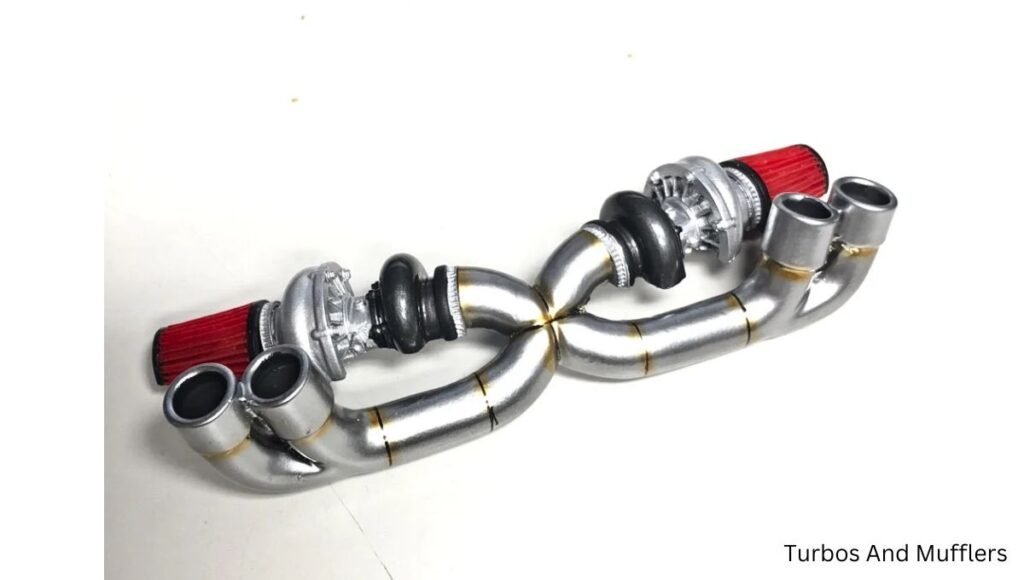
Operational Differences
Turbos and mufflers are two entirely different components that serve different purposes in a vehicle’s exhaust system. A muffler is a device that reduces the noise emitted by the exhaust gases while a turbo is a device that increases the power output of an engine.
Mufflers work by passing the exhaust gases through a series of chambers and baffles which absorb and cancel out the noise. Whereas, turbos work by compressing the air entering the engine, which in turn increases the power output of the engine.
Design And Placement
Mufflers and turbos have different designs and placements in the exhaust system. Mufflers are generally larger and have a cylindrical shape. They are typically located towards the rear of the vehicle and are connected to the exhaust pipe.
On the other hand, turbos are smaller and have a more complex design. They are located closer to the engine and are connected to the intake manifold. The placement of the turbo allows it to compress the air entering the engine, which in turn increases the power output of the engine.
In conclusion, turbos and mufflers are two entirely different components that serve different purposes in a vehicle’s exhaust system. While mufflers reduce the noise emitted by the exhaust gases, turbos increase the power output of the engine.
The design and placement of these two components are also different. Mufflers are generally larger and located towards the rear of the vehicle, whereas turbos are smaller and located closer to the engine. Understanding the differences between turbos and mufflers can help vehicle owners make informed decisions about their exhaust system and optimize their vehicle’s performance.
Common Myths About Turbos As Mufflers
There are several misconceptions surrounding the use of turbos as mufflers. In this section, we will debunk these common myths and provide you with a clear understanding of the role of turbos and mufflers in silencing engine sound.
Silencing Engine Sound
Turbos and mufflers are both components that contribute to reducing the noise generated by the engine. While mufflers are specifically designed to dampen and muffle the exhaust sound, turbos primarily serve the purpose of increasing engine performance by compressing the intake air. Despite their different functions, people often mistakenly assume that turbos can effectively replace mufflers in silencing engine sound.
It is important to note that while turbos do have an impact on reducing noise to some extent, they are not designed or intended to replace mufflers entirely. Mufflers play a crucial role in attenuating the sound produced by the engine, utilizing techniques such as absorption, diffusion, and reflection to achieve optimal noise reduction.
Turbo Whistle Vs. Muffler Sound
Another common misconception is that the distinctive turbo whistle is equivalent to the sound produced by a muffler. While both turbos and mufflers contribute to altering the engine sound, they produce different types of noise.
A turbo whistle is a high-pitched sound resulting from the turbocharger’s spinning components, such as the compressor wheel. This whistle is often associated with increased turbocharger efficiency and is considered by some as a desirable sound. On the other hand, muffler sound refers to the overall noise reduction achieved by the muffler in the exhaust system.
It is essential to understand that the turbo whistle is not a replacement for the function of a muffler in reducing engine noise. The two serve different purposes and should not be confused.
In conclusion, while turbos do contribute to reducing engine noise to some extent, they are not a substitute for mufflers. The turbo whistle and muffler sound are distinct, with each serving a different purpose in the overall sound management of a vehicle.
The Science Of Exhaust Systems
When it comes to understanding the inner workings of a vehicle, there is a fascinating science behind the exhaust system. From exhaust flow dynamics to the interaction of sound waves and backpressure, each component plays a crucial role in the overall performance of the vehicle. In this article, we will explore these concepts in detail and shed light on whether a turbo can be considered a muffler.

Exhaust Flow Dynamics
Exhaust flow dynamics refer to the movement of exhaust gases through the various components of the exhaust system. It involves a complex interplay of pressure, velocity, and temperature. The primary goal of the exhaust system is to expel the waste gases generated during the combustion process efficiently.
To achieve this, the system consists of several components, including the exhaust manifold, catalytic converter, resonator, and muffler.
The exhaust manifold collects the gases from the engine’s cylinders and directs them towards the catalytic converter. This component plays a crucial role in ensuring the smooth flow of exhaust gases, as any restriction or blockage can lead to decreased engine performance.
From the catalytic converter, the gases then pass through the resonator, which helps to reduce noise and minimize vibrations. Finally, they reach the muffler, which further dampens the sound produced by the engine. Together, these components work in harmony to optimize the exhaust flow and enhance the overall performance of the vehicle.
Sound Waves And Backpressure
Sound waves and backpressures are two essential factors to consider when examining the exhaust system’s performance. They are produced as a byproduct of the engine’s combustion process. These waves travel through the exhaust system and create the distinct sound that we associate with a vehicle’s engine.
Backpressure, on the other hand, refers to the resistance encountered by the exhaust gases as they flow through the system. While some backpressure is necessary for optimal engine performance, excessive backpressure can have detrimental effects. It can reduce power output, increase fuel consumption, and even cause engine damage.
When it comes to turbochargers, they are not considered mufflers in the traditional sense. A turbocharger is a device that increases the amount of air entering the engine, which in turn improves combustion efficiency and power output.
While a turbocharger does affect the exhaust flow dynamics and can impact the sound produced by the engine, its primary purpose is to enhance performance rather than reduce noise.
In conclusion, the science behind exhaust systems is a fascinating blend of fluid dynamics, acoustics, and engineering. By understanding the exhaust flow dynamics and the interaction of sound waves and backpressure, we can appreciate the complexity and importance of this crucial component in a vehicle’s overall performance.
Performance Impacts
When it comes to the impact of a turbo on a vehicle’s performance, it’s essential to consider the benefits of turbos, mufflers, and engine efficiency. Each of these elements plays a crucial role in determining the overall performance of a vehicle.
Benefits Of Turbos
A turbocharger, commonly referred to as a turbo, can significantly enhance a vehicle’s performance by increasing its power and efficiency. By utilizing exhaust gases to drive a turbine, a turbocharger enables an engine to generate more power without consuming additional fuel.
Mufflers And Engine Efficiency
Mufflers, also known as silencers, play a vital role in reducing noise levels produced by the engine. However, they can also impact engine efficiency by restricting exhaust flow. The back pressure created by mufflers can affect the performance of a turbocharged engine, potentially reducing its power output.
Aftermarket Modifications
Aftermarket modifications often raise questions about their classification. Some may wonder if a turbo is considered a muffler. A turbocharger is not a muffler; rather, it is a component that increases the engine’s power by compressing air.
Upgrading To Turbo
Adding a turbo increases engine power and efficiency.
Consider turbo size for optimal performance.
Muffler Replacement Considerations
Choose a muffler that complements the turbo setup.
Ensure proper fit and compatibility with the turbo system.
Legal And Environmental Considerations
A turbo is not considered a muffler but rather an exhaust system component that increases engine power. However, when it comes to legal and environmental considerations, it is important to ensure that the turbo is properly installed and compliant with regulations to minimize noise pollution and emissions.
Noise Regulations
Excessive noise can lead to legal issues. Check local noise regulations.
Emissions And Turbo Technology
Turbochargers can improve fuel efficiency and reduce emissions.
Conclusion
In the realm of vehicle parts, a turbo is not considered a muffler. Turbos and mufflers serve different functions. While a turbo increases engine power, a muffler reduces noise. Understanding these distinctions is crucial for optimizing your vehicle’s performance and sound.
Make informed choices based on their unique roles.

